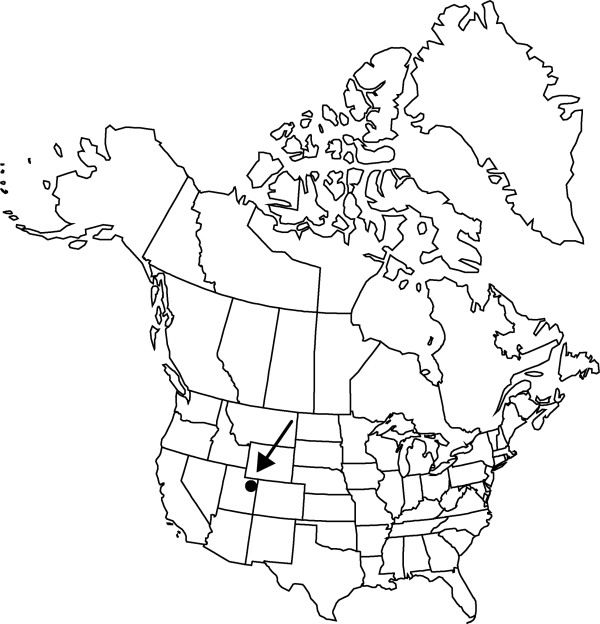Sclerocactus wetlandicus
Succulenta (Netherlands) 68: 123, figs. s.n. (upper row, p. 124). 1989.
Stems usually unbranched, green to bluish green, spheric, cylindric, or elongate-cylindric, 3–8.5 (–15) × 4–10 (–12) cm, glaucous; ribs 12–14 (–15) tubercles evident on ribs. Spines slightly or not obscuring stems; radial spines 6–10 (–14) per areole, white to tan (rarely black), 6–20 mm; central spines 3–4 (–5) per areole, sometimes not greatly different from radial spines; abaxial central spines 0–2 per areole, pale tan, brown, reddish-brown to black, straight and unhooked or curved (rarely hooked), 12–26 × 0.8–1 mm; lateral central spines 2–4 per areole, similar to abaxial; adaxial central spine usually white (rarely light-brown), elliptic in cross-section, 15–29 × 0.5–1.8 mm. Flowers fragrant, funnelform, 2–3.5 (–5) × (2–) 2.5–5 cm; outer tepals with brownish lavender midstripes and pink to violet margins, oblanceolate, 15 (–30) × 30–50 mm; inner tepals pink or violet, oblanceolate to lanceolate, 17–25 (–30) × 3–6 mm; filaments green to white; anthers yellow. Fruits not regularly dehiscent, ovoid, barrel-shaped, 9–25 (–30) × 7–12 mm, with a few membranous scales, mostly near apex. Seeds black, 1.5 × 2.5 mm; cells convex but flattened apically.
Habitat: Gravel-covered clay hills, desert grasslands, saltbush, rabbitbrush flats
Elevation: 1300-1500 m
Discussion
Of conservation concern.
Sclerocactus wetlandicus is morphologically very similar to S. glaucus and frequently has been treated within S. glaucus (L. D. Benson 1982; K. D. Heil and J. M. Porter 1994), a treatment disputed by F. Hochstätter (1997). Populations are geographically separated in Duchesne and Uintah counties, Utah. Phylogenetic analyses of chloroplast DNA (J. M. Porter et al. 2000) are ambiguous regarding the closest relative of S. wetlandicus; however, this species is related to S. brevispinus, S. glaucus, S. wrightiae, S. whipplei, and S. parviflorus.
Selected References
None.
